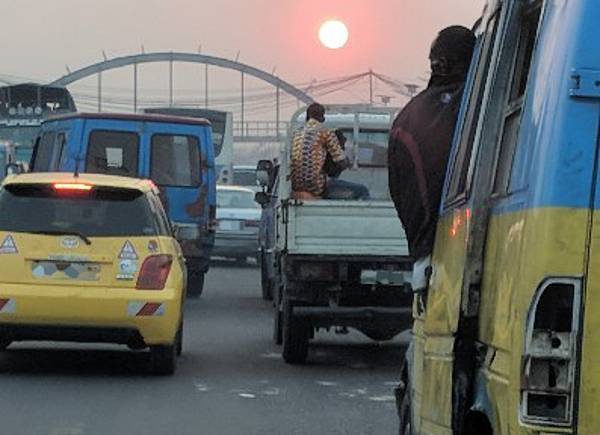8 Photos
Filter Categories
All
Filters
This astronaut image shows two capital cities (brownish-gray areas) on opposite banks of the Congo River. The smaller city on the north side of the river is Brazzaville, while the larger, Kinshasa, is on the south side. The cities lie at the downstream end of an almost circular widening in the river known as Stanley Pool. The international boundary follows the south shore of the pool (roughly 30 km in diameter). The Republic of the Congo, originally a French colony, is sometimes called Congo-Brazzaville - as opposed to the Democratic Republic of the Congo (known from 1971 to 1999 as Zaire) which is often called Congo-Kinshasa, originally a Belgian colony. Brazzaville's population is less than a tenth of Kinshasa's. There is no bridge between the cities so that water craft of many kinds ply between them. It is not uncommon to see dugout canoes being paddled between the cities. Photo courtesy of NASA.
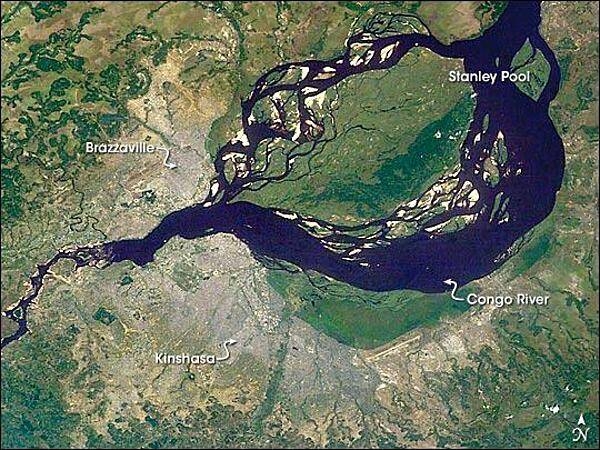
The Luizi Structure, located in southeastern Congo, is a crater covered by grasses up to a meter (3 ft) high. The crater seen in this satellite image has about a 17 km (11 mi) diameter, with an intermittent ring about 5.2 km (3.2 mi) across, and a smaller, center ring about 2 km (1.2 mi) across. Around the perimeter of the crater, a rim rises approximately 300 to 350 m (980 to 1,150 ft) above the interior. In short, Luizi is a well-preserved, moderately sized, complex crater. Exactly when Luizi formed is difficult to answer. Researchers estimate that nearby rocks are 575 million years old - more than 300 million years older than the first dinosaurs. But besides knowing that the impact cannot be older than the rock layers it disrupted, geologists still cannot say when the impact occurred. Photo courtesy of NASA.

Lake Kivu, the city of Goma, and Mount Nyirangongo. Lake Kivu is approximately 90 km long and 50 km wide, with a maximum depth of 475 m and mean depth of 220 m. About 1,370 sq km or 58% of the lake's waters lie within the DRC's borders. The lake bed sits upon a rift valley that is slowly being pulled apart, causing volcanic activity in the area. The city of Goma lies on the lake shore, only 13–18 km south of the active Nyiragongo Volcano.
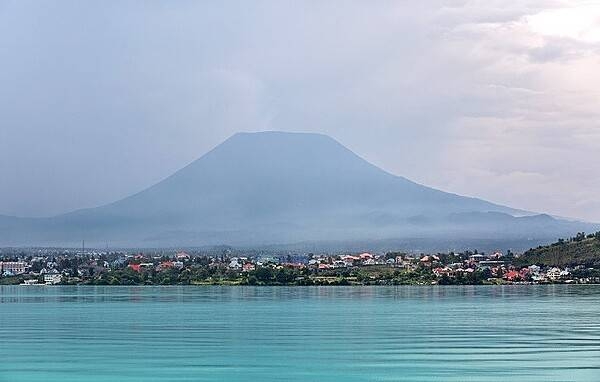
Mount Mangengenge is located southeast of Kinshasa and overlooks the capital city; it is part of the Crystal Mountains range. Mount Mangengenge is a pilgrimage site for many Congolese. The path of ascent is punctuated with crucifix sculptures and it has a large cross at the summit.
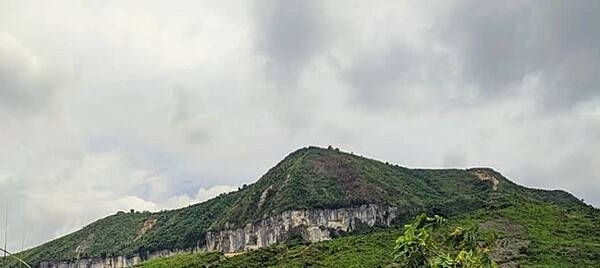
Mount Mangengenge is located southeast of Kinshasa and overlooks the capital city; it is part of the Crystal Mountains range. Mount Mangengenge is a pilgrimage site for many Congolese. The path of ascent is punctuated with crucifix sculptures and it has a large cross at the summit.
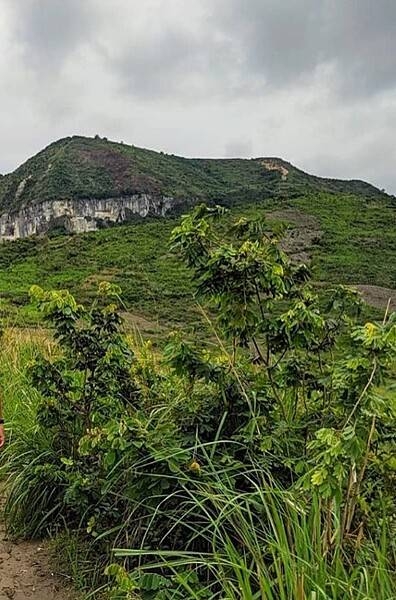
The Congo River, formerly the Zaire River, is the second longest river in Africa (after the Nile). It is also the world's deepest recorded river, with measured depths in excess of 220 m. Measured along with the Lualaba, the main tributary, the Congo River has a total length of 4,344 km. It is the only major river to cross the equator twice.

Boyoma Falls, formerly known as Stanley Falls, is a series of seven cataracts, each no more than 5 m high. The falls extend over 100 km along the Lualaba River between the river port towns of Ubundu and Kisangani (also known as Boyoma) in the Democratic Republic of the Congo. The last of the seven cataracts is also known as the Wagenia Falls, referring to the local Wagenya fishermen, who continue to fish by traditional methods in the river - using woven baskets to "net" fish.

Traffic on the way to the airport in Kinshasa. Only about 2% of the DRC's roads are paved. There are several on-going projects devoted to improvement and maintenance of DRC’s infrastructure.
